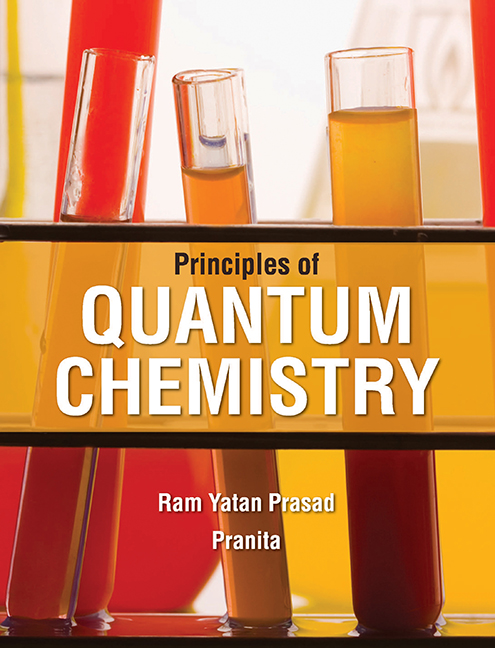Book contents
- Frontmatter
- Dedication
- Contents
- List of Figures
- List of Tables
- Foreword
- Preface
- 1 Quantum Theory
- 2 Wave–Particle Duality
- 3 Mathematical Techniques
- 4 Quantum Mechanical Operators
- 5 Postulates of Quantum Mechanics
- 6 The Schrödinger Equation
- 7 Playing with the Schrödinger Equation
- 8 Hydrogen Atom
- 9 Approximate Methods
- 10 Diatomic Molecules
- 11 Multi-electronic Systems
- 12 Polyatomic Molecules
- 13 Hückel Molecular Orbital Theory/Method
- 14 Density Functional Theory
- Glossary
- Appendix I
- Appendix II
- Appendix III
- Model Question Papers
- Index
8 - Hydrogen Atom
Published online by Cambridge University Press: 02 December 2022
- Frontmatter
- Dedication
- Contents
- List of Figures
- List of Tables
- Foreword
- Preface
- 1 Quantum Theory
- 2 Wave–Particle Duality
- 3 Mathematical Techniques
- 4 Quantum Mechanical Operators
- 5 Postulates of Quantum Mechanics
- 6 The Schrödinger Equation
- 7 Playing with the Schrödinger Equation
- 8 Hydrogen Atom
- 9 Approximate Methods
- 10 Diatomic Molecules
- 11 Multi-electronic Systems
- 12 Polyatomic Molecules
- 13 Hückel Molecular Orbital Theory/Method
- 14 Density Functional Theory
- Glossary
- Appendix I
- Appendix II
- Appendix III
- Model Question Papers
- Index
Summary
The hydrogen atom is the simplest atom, which is a system of two particles, namely, a proton and an electron. In this system, a single electron moves in the field of a nucleus of unit positive charge. This system is bound by electrostatic force of attraction. In other words, we can say that the electron of the hydrogen atom revolves around the nucleus in the field of the force of the nucleus. Since hydrogen is the simplest atom, it formsthe basis for the theoretical treatment of more complex atomic systems. The Schrödinger equation for hydrogen atom can be solved in closed form. When the next atom in the order of increasing complexity is considered, for example, Helium, which consists of two electrons moving in the field of the nucleus with charge two, the Schrödinger equation can no longer be solved in closed form. For the solution of such systems, the approximate methods are employed to get the wave function.
The hydrogen atom (simple solution of Schrödinger equation)
As already stated that the hydrogen atom is one electron system with a charge ‘−e’ rotating around a central proton (p) with charge ‘+e’. The potential energy of the system is expressed as
Putting the value of V in the Schrödinger equation, we have
To solve the Schrödinger equation for hydrogen atom, let us consider
where, r is the distance of electron from the nucleus.
Differentiating Eq. (8.3) with respect to x, we shall get
Differentiating the above equation again with respect to x, we obtain
Putting the value of or r2ψ in Eq. (8.2), we shall get
The simplest solution of Eq. (8.5) may be given by
Differentiating this equation with respect to r twice, we shall get
Putting these values in Eq. (8.5), we have
Since Eq. (8.8) is true for any value of r, the sum of the first two terms, which is independent of r and the third term involving r should be separately zero because the equation should also be satisfied when r → ∞,
We can equate Eqs (8.9) and (8.10) and shall get
This is the value of energy of hydrogen atom. It is clear that E is negative, which indicates that the electron is bound.
- Type
- Chapter
- Information
- Principles of Quantum Chemistry , pp. 272 - 330Publisher: Foundation BooksPrint publication year: 2014

